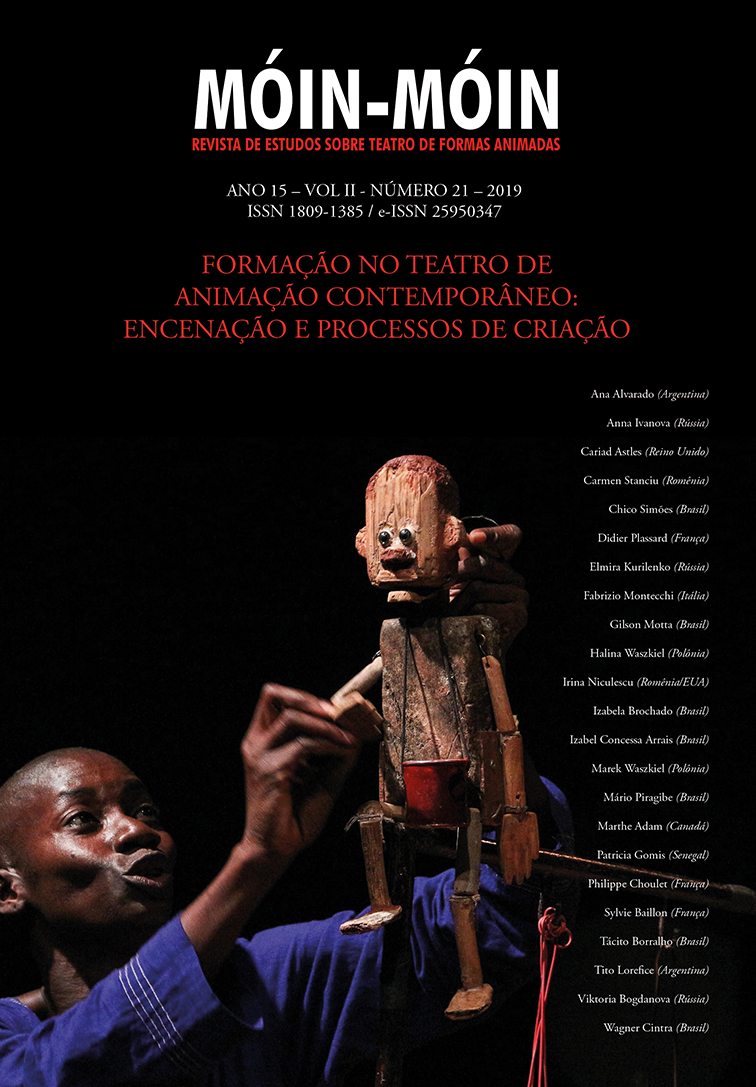Theatre of the Animated Form
DOI:
https://doi.org/10.5965/2595034702212019222Abstract
The article includes some reflections on terms “animant” and “animated
form”. The “animant” denotes any object, material or immaterial (e.g. a shadow), which is submitted by an artist to the process of animation. It can be useful in our contemporary discussions. The term “animated form” is used very often, but not precise. It has become dangerously capacious. It is coming to denote all the actor’s onstage actions. Essentially, in order for the “animation” to occur, it must refer to something that in itself is not alive, and thus – regardless of the convention of its application – it certainly does not refer to human beings. An actor on the stage is unquestionably a living creature, so he/she is not an “animated from”. If puppet theatre wants to march in the artistic avant-garde instead of dragging behind with the epigones, it must focus on the issue which constitutes its core and its greatest merit: on the art of animation and on the phenomenon of the animant.The most important message that the theatre of the animated form conveys to the spectators concerns the issue of the boundary between the living and the dead, the animate and inanimate – and if animated, then why, how and wherefore. The miracle of animation is a cure to our anthropocentrism and egotism. On condition, of course, that we are able to lend a piece of our own life to a created object, a thing which in itself has no life: to a puppet.
Downloads
Downloads
Published
How to Cite
Issue
Section
License
Copyright (c) 2019 Móin-Móin - Revista de Estudos sobre Teatro de Formas Animadas

This work is licensed under a Creative Commons Attribution 4.0 International License.
The readers are free to transfer, print and use the articles published in the Magazine, as long as there’s explicit mention to the author(s) and to Móin-Móin Magazine - Studies in Theater of Animated Forms and there are no changes on the original work. Any other use of the texts needs to be approved by the author(s) and the Magazine. In submitting an article to Móin-Móin Magazine - Studies in Theater of Animated Forms and have it approved, the author(s) agree to give away, without payments, the following rights to the Magazine: first publishing rights and the license for the Magazine to redistribute this article and its metadata to index and reference services that the editors consider appropriate.
The articles whose author(s) are identified represent the author’s point of view and not the official position of Móin-Móin Magazine. The author(s) commit to always mention the publication in the following way when publishing work in reference to the article published in Móin-Móin Magazine:
“This article was originally published by Móin-Móin Magazine volume (insert the volume), number (insert the number), in the year of (insert year) and can be accessed on: http://www.revistas.udesc.br/index.php/móin"
Plagiarism in any way constitutes an unethical publishing behavior and is unacceptable. Móin-Móin Magazine holds the right to use software or other plagiarism tracking methods to scan the submitted works.
![]()
This journal uses Attribution-NonCommercial 4.0 International– (CC BY NC 4.0).






